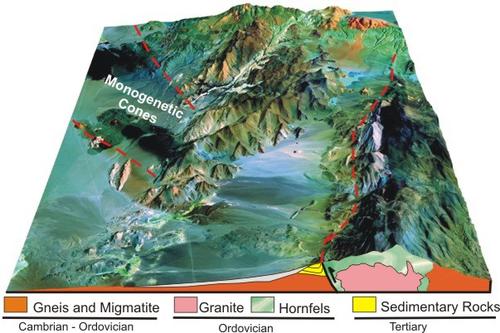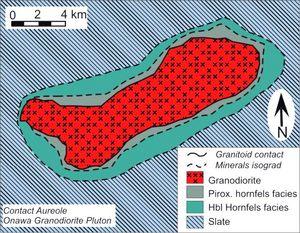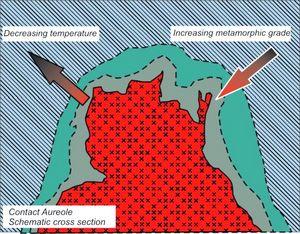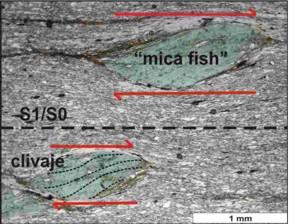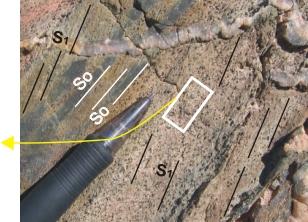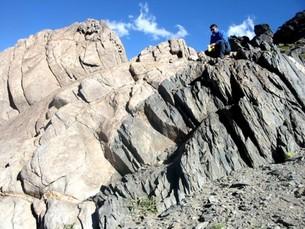Contact Metamorphism
Regional distribution of contact metamorphism. High-grade metamorphic rocks are intruded by a granite pluton, setting up a contact aureole in hornfels facies. Sierra de El Peñón, Argentina
Image Credit: MBG
Sketch map of contact metamorphism: A granite pluton intrudes a slate A concentric distribution of hornfels facies results
Image Credit: MBG after Philbrick (1936) and Moore (1960)
Schematic diagram of contact metamorphism
Image Credit: MBG after Philbrick (1936) and Moore (1960)
Deformed chlorite spots. Chlorite hornfels facies; Source: MBG. See also PETROgraph
Image Credit: MBG
Close-up photograph of phyllite and slate with chlorite spots
Image Credit: MBG
Well-defined contact between intrusive granite and contact-,eatmorphic slate. Sierra El Peñón. Argent
Image Credit: MBG
Contact metamorphism occurs in the vicinity of an igneous intrusive rock as a result of thermal effects of the hot magma. In the classic case, an igneous intrusive body such as a granite intrudes a sequence of sedimentary or metamorphic rocks and produces a contact aureole consisting of several temperature-specific mineral assemblages. Contact metamorphism is thus primarily a thermal phenomenon. It may occur in diverse tectonic settings such as in orogenic or anorogenic environments, in plate interiors or along plate margins. The best-developed contact aureoles, however, are typically developed in anorogenic, plate interior settings where granitic batholiths intrude sedimentary rocks. The best examples of concentric mineral zonations occur mostly in mid– and upper levels of the crust where the temperature gradient is most marked.
Additional Links to the pictures:
Sketch map of contact metamorphism: See more information about hornfels facies results here
Deformed chlorite spots. Chlorite hornfels facies. See also PETROgraph (in German)
